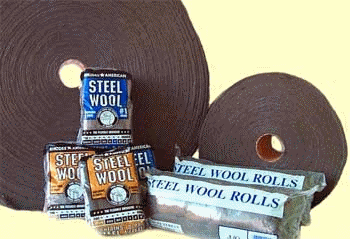The steel wool buffing process is fairly straightforward.
Sanding lacquer with steel wool.
The main advantage of using steel wool rather than sandpaper is that the steel wool can compress to almost any shape so it can be used much more easily in hard to reach places as well as on complex shapes such as.
Apply the lacquer finish.
You can stop at 600 grit if you intend to rub with steel wool or with pumice.
Spraying is the traditional method of applying lacquer but brushable lacquer is an acceptable alternative although it can be a bit more temperamental than spray lacquer.
The leveled finish is then further abraded with a fine grade 4 0 steel wool to leave a finer and slightly different scratch pattern thus raising the sheen.
Use medium to heavy pressure and try to keep the pressure and the direction of your strokes as consistent as possible.
In my experience assuming the finish is dry there isn t a difference other than the coarseness of the sand paper or steel wool.
Synthetic steel wool creates an even silky smooth finish that s a joy to look at and feel.
It s worthwhile buying a quality steel wool.
The only drawback with poly is that it is.
Sanding removes defects and levels ridges.
What steel wool are you using.
The steel wool is very fine and will actually scrape off a very fine layer leaving a silky smooth finish often referred to as a hand rubbed finish.
After carefully wiping off the sanding dust or residue with a damp cloth rub the entire finished surface with steel wool and lubricant in the direction of the grain.
The very fine strands of steel gently cut into the surface being sanded removing an ultra thin layer.
Here s a process for achieving a high satin or semi gloss rubbed sheen on a lacquer coating.
But you will usually get better results if you sand to 1000 grit first.
This age old two step technique is commonly used on shellac and lacquer finishes but it can work well on water and oilbased polyurethane too.
Sanding sealer powders when sanded.
0000 steel wool should be equivalent to 400 600 grit sand paper.
Then rub with 0000 steel wool or with pumice and a mineral oil lubricant using a felt or cloth pad.
Using steel wool or sand paper allows you to create a uniform surface for the next coat of polyurethane which generally looks nicer more professionally etc.
Steel wool can be used instead of fine sandpaper for many sanding jobs.
If you re going for a satin finish rubbing out with 0000 steel wool should work.
If you want a higher gloss sand up to 2000 grit p2000 or higher and then rub with rottenstone and a mineral oil lubricant.
Liberon makes the best steel wool and it isn t too expensive maybe a few dollars more than what they sell at a big box store.
Sanding sealer is varnish or lacquer with a soap like lubricant included.

